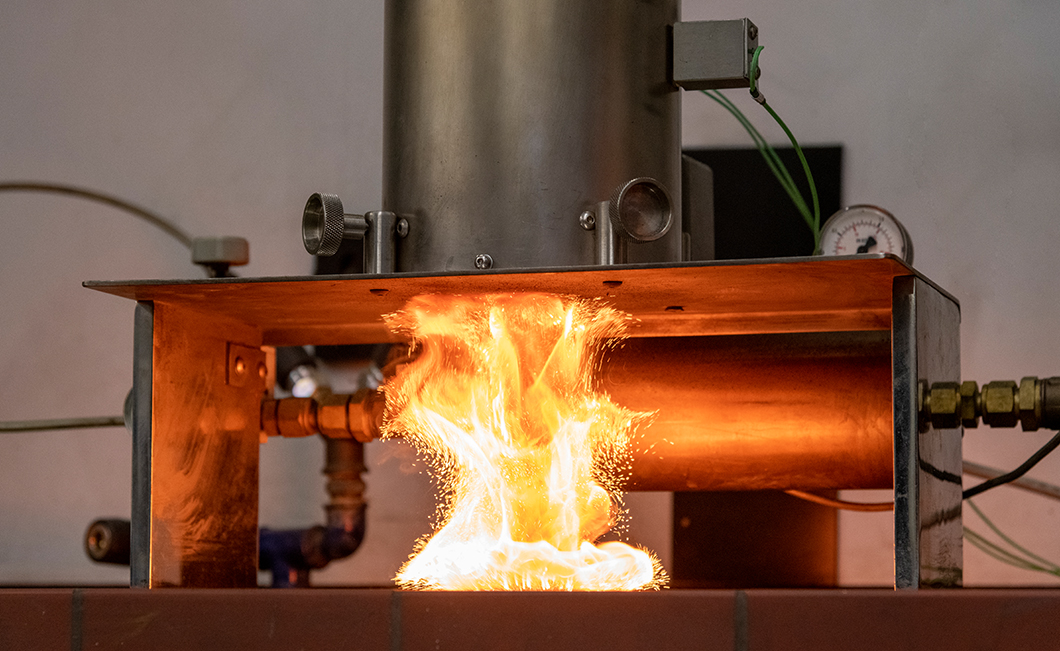
To determine the minimum ignition temperature, a dust/gas/air mixture is blown into a temperature-controlled ignition apparatus. A flame formation shows that ignition has occurred.
Source: BAM
Industrial explosions and fires caused by the ignition of combustible dusts continue to represent a hazard potential that should not be neglected in all industrial areas where such materials are produced or used. The determination of suitable protective measures to prevent fires and explosions is generally based on so-called safety parameters of the materials used, which are determined by means of internationally standardized test methods.
Hybrid mixtures, i.e. mixtures of combustible dust and gas, occur in a variety of industries such as coal and oil processing, chemical industry, metallurgy and textile industry. This will increase even more with the increased use of hydrogen. However, standardized methods for determining safety parameters only exist for gases, vapours and mists or for dusts. The test methods differ in some essential parameters and are therefore not easily comparable.
Within the scope of a guest scientific exchange with the Sichuan University Chengdu, China, as well as with other partners, the ignition temperatures of different dusts were experimentally investigated while adding combustible gases including hydrogen. Depending on the dust's content of volatiles, i.e. components released as gases, partly opposite effects were observed. For low-volatile anthracite coal, for example, the addition of combustible gases of up to 3 vol. % generally led to a reduction in the minimum ignition temperature. The reactions of highly volatile bituminous coal were much more complex. In some cases, when larger quantities of fuel gases were added, an increase in the minimum ignition temperature even occurred, except for hydrogen. This effect was observed for the first time.
The investigations make it clear that the admixture of combustible gases to dusts can cause different effects. Appropriate investigation procedures are therefore necessary to determine the parameters necessary for the determination of measures to prevent fire and explosion.
Minimum ignition temperature of carbonaceous dust clouds in air with CH4/H-2/CO below the gas lower explosion limit
Dejian Wu, Martin Schmidt, X. Tan, P. Zhao, W. Huang, X. Qian
published in Fuel, Vol. 264, page 116811, 2020
BAM Division Explosion Protection Gases and Dusts


